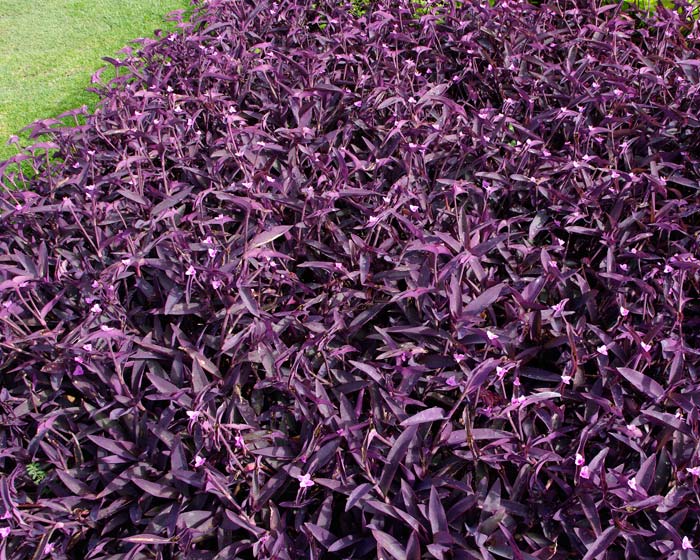http://easss.com/catalog/sears

Description: T. pallida is an evergreen perennial plant of scrambling stature. It is distinguished by elongated, pointed leaves - themselves glaucous green, fringed with red or purple - and bearing small, sterile three-petaled flowers of white, pink or purple. Plants are top-killed by moderate frosts, but will often sprout back from roots. Protection by mulching will increase the chances of sprouting in marginal areas.
 Cultivation: Widely used as an ornamental plant in gardens and borders, as a ground cover, hanging plant, or - particularly in colder climates where it cannot survive the winter season - houseplant, it is propagated easily by cuttings (the stems are visibly segmented and roots will frequently grow from the joints). However, this very characteristic, in addition to the fact that it is remarkably shade-tolerant and can thrive in a wide range of soil conditions, makes T. pallida quite formidable should it be encountered in situations where it has not been intentionally cultivated and carefully maintained. In areas throughout the southern United States and Australia, it is considered an invasive species and has defied many attempts at control or eradication.
Cultivation: Widely used as an ornamental plant in gardens and borders, as a ground cover, hanging plant, or - particularly in colder climates where it cannot survive the winter season - houseplant, it is propagated easily by cuttings (the stems are visibly segmented and roots will frequently grow from the joints). However, this very characteristic, in addition to the fact that it is remarkably shade-tolerant and can thrive in a wide range of soil conditions, makes T. pallida quite formidable should it be encountered in situations where it has not been intentionally cultivated and carefully maintained. In areas throughout the southern United States and Australia, it is considered an invasive species and has defied many attempts at control or eradication.As a houseplant, T. pallida has been judged exceptionally effective at improving indoor air quality by filtering out volatile organic compounds, a class of common pollutants and respiratory irritants, via a process known as phytoremediation.
Numerous cultivars are available, of which 'Purpurea' with purple foliage has gained the Royal Horticultural Society's Award of Garden Merit.
No comments:
Post a Comment